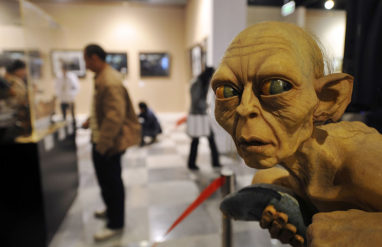WATCH: Can You Correct These Grammatically Incorrect Song Lyrics?
Though written for children, nursery rhymes often conceal references to historical events. These hidden stories behind three popular nursery rhymes may not be well known but they certainly make “Humpty Dumpty” a little more interesting.
What is the origin of “Humpty Dumpty”?
Humpty Dumpty was not originally an egg, as immortalized by John Tenniel, illustrator of Lewis Carroll’s Through the Looking Glass in 1871. But the question of who— or what?— he was has been a mystery for more than 200 years.
One recent theory claims the name referred to a cannon used by the army of Charles I in 1648 to deter the opposing army of Parliamentarians. The cannon was mounted on a church tower and defended the town of Colchester for nearly three months. Eventually, the church tower was knocked down and the cannon tumbled into the marsh below, never to be found.
Although cinematic, this theory, much like our doomed Dumpty, falls apart: it originates with a 1956 spoof article in The Oxford Magazine.
But the term Humtie Dumtie does have a historical connection: a 17th century boiled brandy and ale drink. (Beware: requesting this drink today may get you some egg on the face, for obvious reasons.)
The Classical Dictionary of the Vulgar Tongue (published in 1785), defines a Humpty-dumpty as a “short, dumpy, hump-shouldered person,” while a book on children’s games from the same era describes it as a game involving a fall at the end (à la “Ring Around the Rosie”).
Any way we look at it, Humpty Dumpty is a puzzle …
What is the origin of “London Bridge Is Falling Down”?
The original London Bridge was built by the Romans, though it has since been replaced numerous times. This bridge, as the song details, fell down.
In fact, it fell down frequently due to disrepair, a far more mundane explanation than the widely stated reason for its collapse, invasion by Viking armies.
The earliest citation of the lyrics dates to 1744 in Tommy Thumb’s Pretty Song Book, but a reference to a similar song in Henry Carey’s Namby Pamby records the line as “London Bridge is broken down.”
But what about “Ring Around the Rosie”?
Many have interpreted this rhyme as referring to the bubonic plague, which swept through England at the turn of the 15th century and again in the 17th century. This interpretation correlates the rosie rings with the red circular rashes that were symptoms of the plague, and the pockets full of posies with an herbal treatment to deter the terrible ailment.
However, folklorists and historical linguists take issue with this interpretation because the rhyme did not appear in print until the late 1800s, hundreds of years after the plague. Also, there is no known reference tying roses to symptoms of the plague in historical texts of the time. This dark interpretation appears to be a fictional history of a silly children’s rhyme. Phew.
Even if we’ll never discover the true origins of all of these rhymes, one thing is for certain: there was a lot of falling back then.














